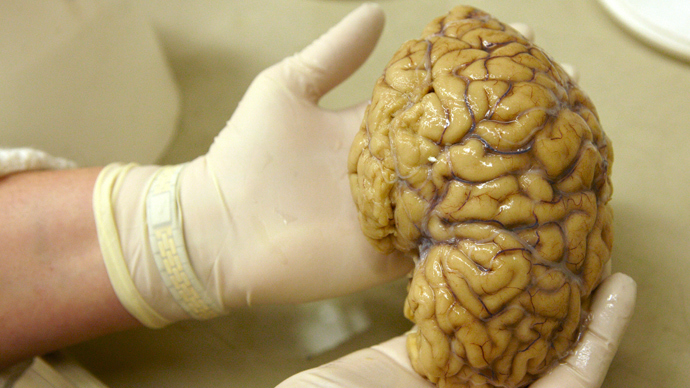Stanford neuroscientist: 'We’re now able to eavesdrop on the brain in real life'

Neuroscientists at Stanford University have made a major breakthrough with regards to how the human brain engages in quantitative thought, and some say it’s opening the door for being able to someday eavesdrop on the mind’s inner-workings.
A team at Stanford’s School of Medicine had their findings published this week in the journal Nature Communications, and their eye-catching result is being considered a big step to understanding how the brain operates, specifically in terms of numbers.
After monitoring the brain waves of three seizure patients, the scientists determined that a particular part of the mind became active when the subjects were asked to solve mathematical equations, but also when quantitative terms — such as “more than” or “an extra little bit” — were spoken during routine discussions.
Bruce Goldman wrote about the study for the Stanford School of Medicine website and said the team of scientists “collected the first solid evidence that the pattern of brain activity seen in someone performing a mathematical exercise under experimentally controlled conditions is very similar to that observed when the person engages in quantitative thought in the course of daily life.”
According to the scientists who conducted the study, however, it could be the start of something much more.
“We’re now able to eavesdrop on the brain in real life,” Dr. Josef Parvizi, the director of Stanford's Human Intracranial Cognitive Electrophysiology Program and lead scientist behind the studio, said to Goldman.
To conduct the study, Parvizi and company monitored electrical activity in a region of the brain called the intraparietal sulcus which, according to earlier studies, has ties to numerosity, or the mathematical equivalent of literacy, as Goldman explained.
As expected, the Stanford scientists experienced a reaction occurring on that part of the brain when basic math was asked of the subjects. His team also compared those results with video recordings of the patients interacting with friends and family, and determined that just discussing quantitative concepts caused that part of the brain to become active.
“You are able to see how neurons within the human brain are working in a real life setting,” Parvizi told Time Magazine.
"The patient doesn’t need to talk to you. They can think about numbers and you can see that red mark (corresponding with activity in a particular brain region) go up," he said to CNN.
As the team also learned, quantitative concepts cause similar reactions. When the subjects hear phrases such as “some more” and “many,” electrodes attached to the intraparietal sulcus alerted the doctors of activity. In one patient’s case, her intraparietal sulcus became active when she spoke over the phone about being given “some more Vicodin” and while discussing a “ten-to-fifteen minute seizure.”
Dr. Parvizi told Time that “[t]he only thing we can tell is that they were thinking about numbers,” and not specifics such as what integer in particular. As technology advances, though, new possibilities might someday emerge.
“This is exciting, and a little scary,” Henry Greely, the
chair of Stanford’s Center for Biomedical Ethics, said in a
statement. “It demonstrates, first, that we can see when
someone’s dealing with numbers and, second, that we may
conceivably someday be able to manipulate the brain to affect how
someone deals with numbers.”
As far as Dr. Parvizi is concerned, that’s still a long way
coming.
“We’re still in early days with this,” he told reporters.
“If this is a baseball game, we’re not even in the first
inning. We just got a ticket to enter the stadium.”














